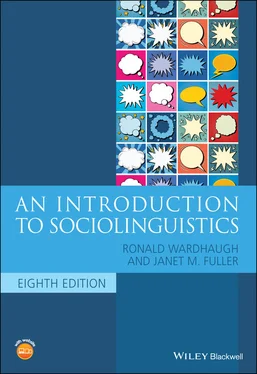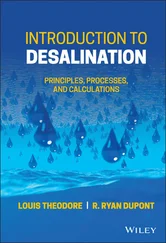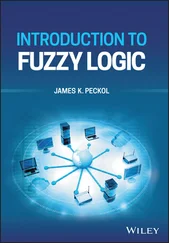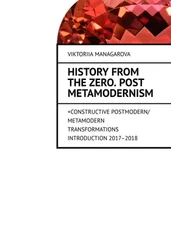The standard language ideology can also be used to discriminate against ‘ non‐native’ speakers of a language; the main principle is the same, that one way of speaking is inherently better than all others, but in this case the ways of speaking are linked to being a learner or second language speaker of a language. Lindemann and Moran (2017) discuss the use of the term ‘broken English’ in the US context. A major finding of their study is that this term is used to construct the ‘other’ in US society and is often used as a descriptor for people who are described negatively in other ways (e.g., criminals). In the cases in which ‘broken English’ is assigned to a person of high social status, it is used to portray their high status as problematic or perhaps undeserved.
A second common ideology is a purist ideology, which rests on the idea that languages – again, as static, bounded systems – should not change but should retain a pure state. This attitude often stigmatizes youth speech as well as other innovations which are part of the natural development of language. Research by Albury and Carter (2018) illustrates this for Maori, the indigenous language of New Zealand. This language was once essentially outlawed by British colonialists, but is now being revitalized, and older speakers have negative attitudes about the Maori spoken by younger speakers who include innovative features; in other words, they have purist ideologies about language. However, this research illustrates an important aspect of hegemonic ideologies: despite dominance, hegemony is never complete (Woolard 1998). In this case, some of the youth who speak Maori are resistant to purist attitudes; for instance, they used loanwords from English and in surveys they gave responses noting that all languages borrow vocabulary. Further, the overwhelming majority of these youths did not feel that one needed to completely master the language in order to use it, but rather that using the language with learner errors was fine – indeed, desirable, as the alternative was allowing the language to die out. Thus the purist ideology, while not altogether absent in the discourse of these youths, was challenged.
The final type of ideology we will discuss here is what are called monoglossic ideologies, which value monolingualism over multilingualism. We refer to this in the plural as there are different monoglossic ideologies – ‘the one nation–one language’ ideology, for example, which demands strict indexicality between a language and a nation. Monoglossic ideologies may also include purist attitudes about borrowing (i.e., that the language should remain ‘pure’ from the influence of other languages). Monoglossic ideologies stigmatize language mixing, a topic we will return to in chapter 8.
Again, it is important to note that while hegemonic ideologies – for example the ideology that national belonging is indexed through the national language – do exist, this hegemony may be challenged. In a study about Ukrainian language ideologies Seals (2019) notes that some young Ukrainians in her study claimed that ‘it doesn’t matter what you speak,’ and argued that speaking Russian did not make you less Ukrainian. This challenge to the monoglossic ideology of ‘one nation–one language’ illustrates another aspect of hegemony: although it can be challenged, the challenges must recognize (and thus reproduce) the hegemonic ideology. The protest that the link between the Ukrainian language and Ukrainian identity is not absolute must also acknowledge the pervasive ideology of an indexical relationship between language and national identity.
Look at the definitions for ‘slang’ provided on Urban Dictionary, an online dictionary providing definitions posted by users. (Ignore those that have nothing to do with language use; this word can also be used to mean sex, drug dealing, and the past tense of sling by some speakers.) What are the ideologies about slang that appear in this forum? To what extent are they about language (and, often, language decay) and to what extent are they about the groups of people associated with the use of slang?
Iconicity, erasure, and recursivity
A framework for the study of language ideologies was proposed by Gal and Irvine (1995) in which they outline the concepts of iconicity, erasure, and recursivity. The relationship between language and social groups is seen as iconic: language does not just index a social group (as discussed in the last chapter) but is perceived as sharing features with it. For example, in Dickinson’s (2010) research in the Zakarpattia region, she notes that although this region was recognized as part of the Ukraine, it was also viewed as a wild and foreign ‘other.’ Descriptions of the dialect of this region by outsiders always included reference to indecipherable words for everyday objects, and in this way the ‘otherness’ of the language depicted the ‘otherness’ of the people.
Erasure occurs when certain information about languages is ignored in order to support a particular ideology. An interesting example of this is provided by Alfaraz (2018) in a study of language ideologies in the Cuban diaspora. She found that while Cuban Spanish had high prestige in the diaspora, Spanish spoken in Cuba was stigmatized. The study showed that the participants could not actually distinguish between the two varieties but assumed that speakers using nonstandard features were from Cuba. Further, if they were told that speakers were from Cuba and not the diaspora, they rated these voices as less standard, regardless of the actual features which were used in the sample. Thus, the linguistic reality was entirely erased by these speakers; they ignored the linguistic features and assumed standardized speech for the diaspora speakers. This erasure allowed them to maintain the ideology of the superiority of the Spanish spoken in the diaspora over that spoken in Cuba.
Finally, relationships between languages are recursive, meaning that they are repeated on different linguistic levels. For example, the hierarchical relationship between English and indigenous and immigrant languages in the US is replicated between dialects. That is, while English is seen as superior to other languages (supported by a monoglossic ideology), the standard language ideology reinforces this same hierarchical order with English varieties. Thus the standard – that is, some idealized standardized variety of English – is seen as superior to regional, ethnic, or social‐class varieties.
As mentioned above, the study of language attitudes overlaps with the study of language ideologies; both look at how people feel about languages, with language ideology research focusing more on larger societal discourses. The methodologies used to look at these phenomena are part of how we categorize research as being on ideologies or attitudes. This is not a clear distinction, however; although the analysis of discourse has traditionally led to research which talks about ideologies, Liebscher and Dailey‐O’Cain (2017) advocate interactional data in the study of language attitudes.
In this section we will focus on experimental methods more traditionally associated with attitude research. One of the issues involved in research methodology is whether the research participants reveal conscious or explicit language attitudes, or if the task seeks to elicit subconscious or implicit attitudes (see Rosseel and Grondelaers 2019; Pharao and Kristiansen 2019 for an in‐depth discussion of the complexity of these distinctions). While of course it is possible to directly ask research participants what they think of different ways of speaking, in surveys or interviews, a number of other methods have been devised to get at what have been called subconscious or implicit attitudes about language and their users. In the next section, we will discuss a method involving the use of maps to elicit descriptions and evaluations of regional varieties which is called perceptual dialectology. In the subsequent sections, we will also discuss a well‐known indirect method of studying language attitudes, called matched guiseor verbal guisetechnique, and the more recently developed implicit association test.
Читать дальше




![Andrew Radford - Linguistics An Introduction [Second Edition]](/books/397851/andrew-radford-linguistics-an-introduction-second-thumb.webp)







